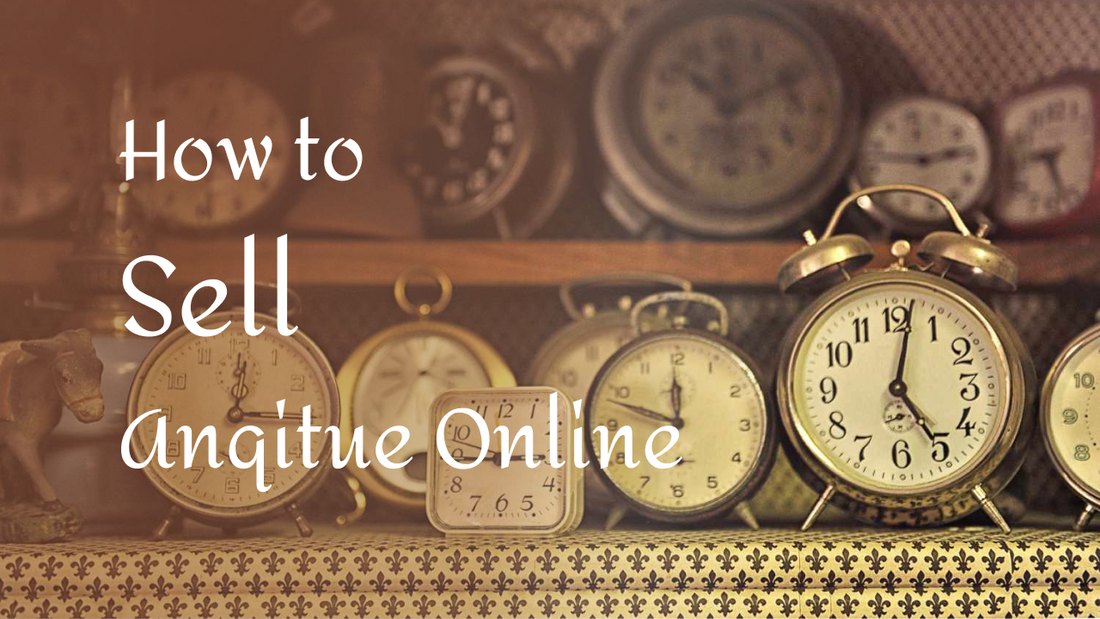How to Sell Antiques Online Quick Guide
Table of Contents Hide
Selling antiques online can be a profitable and rewarding experience if done correctly. This quick guide will walk you through the essential steps, from setting up your online store and pricing your items to ensuring authenticity and meeting legal requirements.
Whether you're a seasoned dealer or just starting out, this guide from NextSky will help you navigate the process of selling antiques on platforms like Shopify, eBay, and social media, ensuring that your valuable items find the right buyers while maximizing your profit.
How To Sell Antiques Online
Sell on Your Own Online Store
Creating your own online store to sell antiques gives you complete control over the selling process. You can design the store to reflect your brand, set your prices, and decide how you want to showcase your antiques.

Platforms like Shopify or WooCommerce make it easy to create and manage an online store. This approach allows you to build a direct relationship with customers and avoid paying commission fees charged by third-party marketplaces.
Sell on A Marketplace
Selling antiques on well-established marketplaces like eBay, Etsy, or Chairish offers immediate access to a large audience of antique enthusiasts. These platforms provide built-in search functionalities and marketing tools that can help attract buyers.
However, they often charge listing fees or a percentage of the sale, which can affect your overall profit margins. Despite the fees, marketplaces offer visibility and trust, which can be valuable for first-time sellers.
Sell on Social Media
Using social media platforms like Facebook, Instagram, or Pinterest to promote and sell antiques can be an effective strategy for reaching a broader audience. You can post images, share stories about the history of the items, and engage directly with potential buyers.

Facebook Marketplace, in particular, allows for direct transactions, while Instagram and Pinterest can drive traffic to your website or listings. Social media platforms also allow for targeted ads to reach specific demographics interested in antiques.
Search for Nearby Buyers
Connecting with nearby buyers through local platforms like Craigslist, Nextdoor, or Facebook Marketplace offers an easy way to sell antiques without worrying about shipping logistics.
This method allows for direct communication with local buyers and often leads to quicker transactions. Selling locally also helps you avoid the risks and costs associated with shipping fragile antique items, making it a cost-effective option for sellers.
How To Price Your Antiques
To price your antique, start by researching similar items online to gauge market rates. The condition and rarity of the item are crucial; better-preserved and rarer pieces typically command higher prices.
You may also consider getting a professional appraisal for an accurate valuation, particularly for valuable or unique items. Market trends can also impact pricing, so staying informed on what’s in demand is essential.
Historical significance and provenance can further enhance the value of your antique, making it worth more to collectors.
5 Steps Guide To Successfully Sell Antiques Online on Shopify
1. Create your online store
Begin by signing up for a Shopify account and selecting a theme that complements the antique aesthetic. Customize your store’s design with branding elements like logos, color schemes, and fonts that align with the vintage feel of your products. Add essential pages like About, Contact, and FAQs.
>>>> Read more: What is Shopify? How does Shopify work?
2. Set up your product pages
Upload clear, high-resolution images of your antiques from multiple angles. Write detailed product descriptions highlighting the history, condition, and unique qualities of each item.

If applicable, include certificates of authenticity and care instructions. Properly categorize your antiques to make them easy to browse, and use keywords to optimize searchability.
3. Select your apps and sales channels
To streamline your operations, integrate Shopify apps for inventory management, shipping, and order tracking. For example, use apps like Oberlo or ShipStation for logistics, and Shopify's built-in SEO and analytics tools to monitor performance.
Expand your reach by connecting to other sales channels, such as eBay, Facebook Marketplace, or Instagram, where antique enthusiasts may also shop.
4. Pick your payment gateway
Shopify Payments is the default option, but you can also enable other gateways like PayPal, Stripe, or Authorize.net to offer customers flexibility. Ensure your payment gateways support various currencies if you plan to sell internationally and implement security features like SSL certificates to protect customer data.

5. Market your antique store
To drive traffic to your store, use a combination of marketing strategies. Optimize your site for SEO by including keywords in product descriptions and meta tags.
Leverage social media platforms like Instagram and Pinterest, which are great for visual marketing, to promote your items. Consider running targeted ads on Google or Facebook and utilizing email marketing to re-engage customers and promote new products or special offers.
Things You Need To Consider When Selling Antiques Online
Ensure Authenticity
Authenticity is crucial in the antique market. Buyers expect genuine items, so provide provenance documents or certifications.
Ensure the items are authentic, and be prepared to provide proof of origin or certificates of authenticity.
For example, when selling antique furniture, offering restoration records or expert appraisals can build trust. Without proof, items may be seen as reproductions, lowering their value.
Beware of Legal Restrictions
Certain items, such as culturally significant artifacts or endangered materials like ivory, may have strict laws.
For instance, selling ivory antiques in the U.S. often requires special permits due to conservation laws, while some countries completely ban the trade.
Make Sure You Have Insurance
Shipping valuable antiques requires special care and insurance for protection during transit. Shipping and storing valuable antiques carry risks. Ensure proper insurance coverage to protect against damage or theft.
Follow Platform Rules
Each platform (e.g., eBay, Etsy) has specific rules for listing antiques, including shipping guidelines and item descriptions.
For instance, eBay may require detailed photos and condition reports for high-value items to prevent disputes. Not adhering to these rules can result in penalties or removal of listings.
>>>> Read more:










